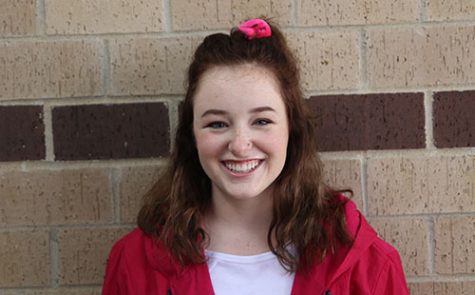Senior Daniel Apple works through adversity and signs at nationally-ranked university

Senior Daniel Apple prepares to battle for the ball during his 2018 season. Despite difficult injuries that kept him from soccer for a year, Apple signed to play at Baker University in the fall.
Last February senior Daniel Apple was preparing for a soccer game with his club team at the beginning of the outdoor season when he noticed a tightness in his hamstring. Despite this, he played as hard as usual, dismissing it as soreness. While fighting for the ball in the early first half of the game, Apple took a step and felt his hamstring tear.
Apple’s torn hamstring was just the beginning of a series of hardships. Little did he know, problems in his hip had already begun developing, but they were nonsymptomatic and wouldn’t show until later.
Meanwhile, Apple began treating his hamstring with physical therapy and rest, unable to play for the rest of the season.
“Physical therapy was pretty tough because they did a lot of acupuncture and electricity therapy,” Apple said. “That was really painful, but it always helped and it was worth going every day.”
After about two months, Apple was still experiencing pain in his leg. He was told that his hamstring should have healed and was ordered to get an MRI.
The MRI confirmed that Apple’s hamstring was healed, but the pain persisted. He went for a jog to test out his leg and noticed that the pain was coming from his hip.
“I returned to physical therapy and told them what happened and they did a few tests and after the tests they sent me back to my orthopedic doctor who x-rayed me and did a few tests,” Apple said. “After that they confirmed I had femoroacetabular impingement.”
Femoroacetabular impingement is abnormal bone growth in the hip joint, causing the bones to rub and scrape when they move.
“After they told me that I had that, they instructed me that there was no way to solve the problem except surgery, but physical therapy can resolve symptoms, so I ended up doing in total about five months of physical therapy,” Apple said.
Physical therapy was “really up and down” for Apple. Along with exercises, the most painful part of physical therapy was his platelet-rich plasma injections, which were injected into his hip with a long needle.
“Every time I saw improvement, it ended up getting worse almost right after,” Apple said.
Because of this, he decided to quit physical therapy and schedule a surgery.
Before the surgery, Apple managed to play through his pain for over half of his senior season of soccer. Playing before the surgery would not worsen his condition, so he decided to push through and played 13 games in total.
“It was about at that time I went back to the doctor because I was starting to feel it [pain] in my right hip as well,” Apple said.
About a month after the pain in his right hip began, Apple had surgery done on his left hip on Nov. 29.
“The surgery itself was really smooth and I didn’t have too many problems with it,” Apple said. “After the first week, the pain went down pretty considerably, but I had to spend about three weeks on crutches and four weeks on a continuous passive motion machine for six to eight hours a day. That was the worst part.”
Before he fully recovered, Apple also had surgery on his right hip on Feb. 5.
“The second one was a little bit tougher because I still had to deal with a lot of trouble from my left hip, so it made it really difficult to deal with,” Apple said.
Even though Apple was unable to play soccer for a whole year, he is still reaping the benefits from his past successes. He signed to play at nationally-ranked Baker University on Jan. 22.
“Committing was an incredible feeling, given everything I’ve gone through in the last year,” Apple said. “I’ve been looking at Baker for a long time and they’re an incredible program, so I’m really excited to get back to full health and help the team next year.”
Ultimately, Apple’s experience can inspire others to never give up despite adversity and work hard for what they want.

Senior Daniel Apple carries the ball during a home game in his 2017 season.

Meet Abby Smith, the Green Pride's first Graphic Design Editor. This is Abby’s senior year, as well as her third year on staff. She has...

